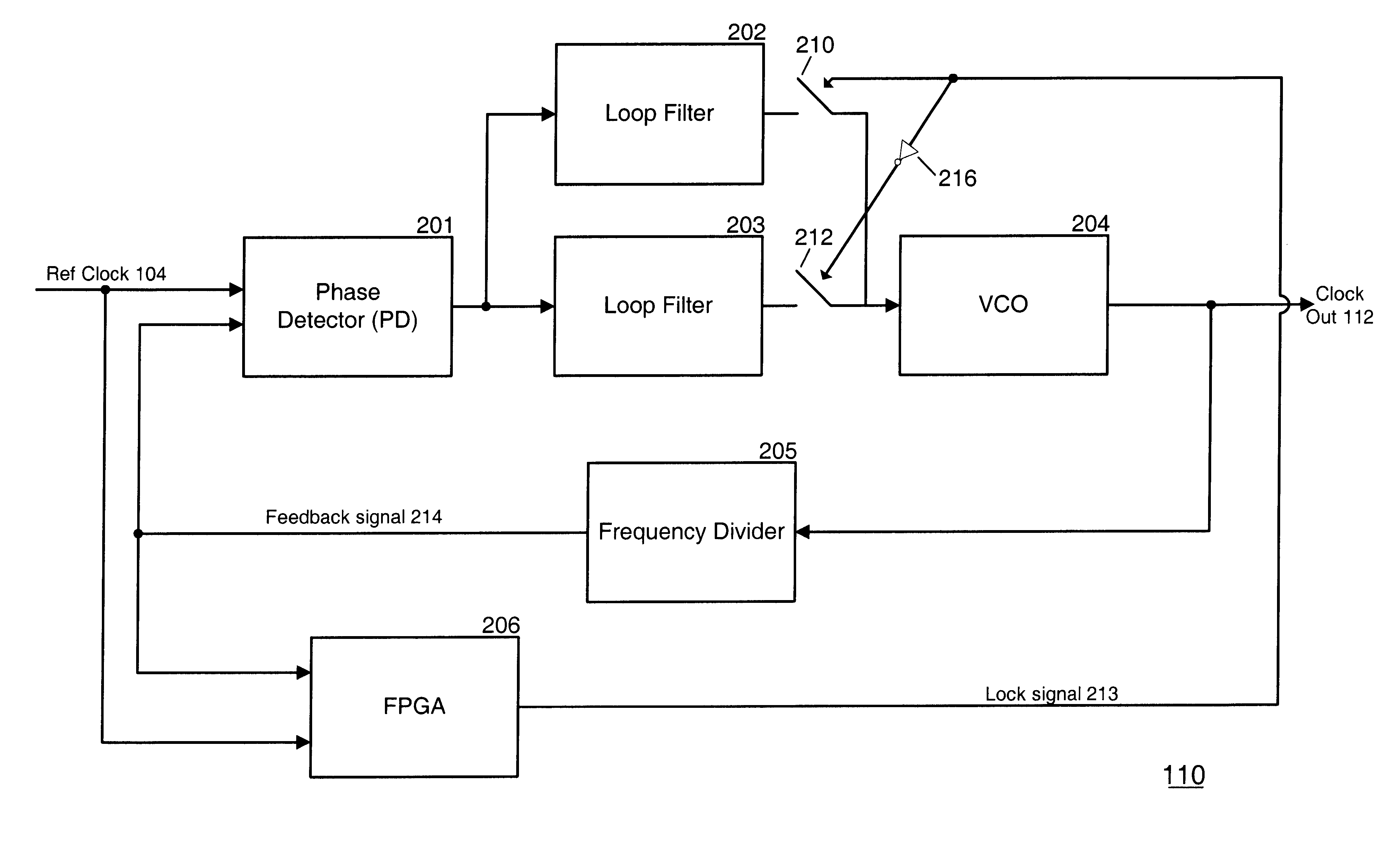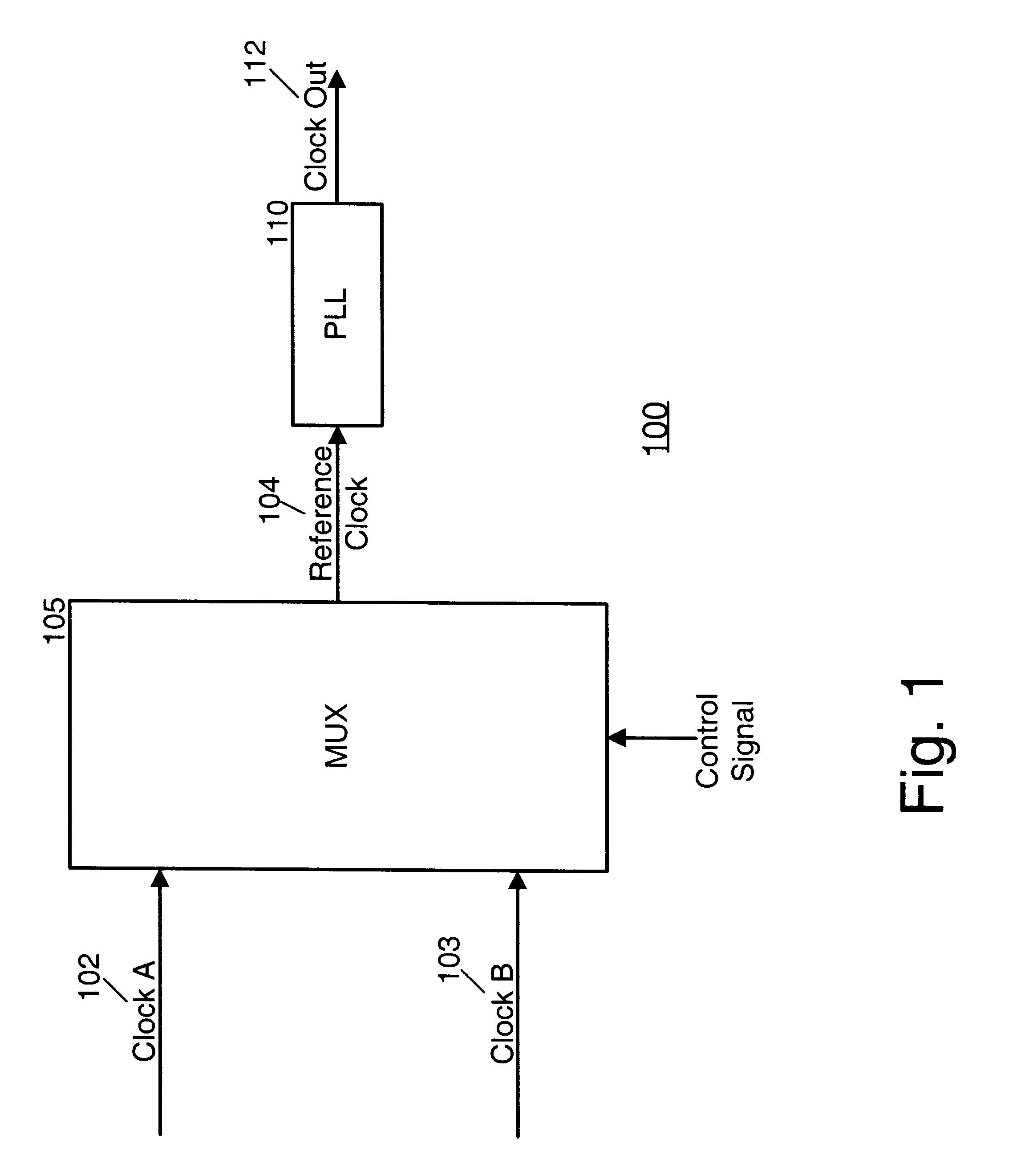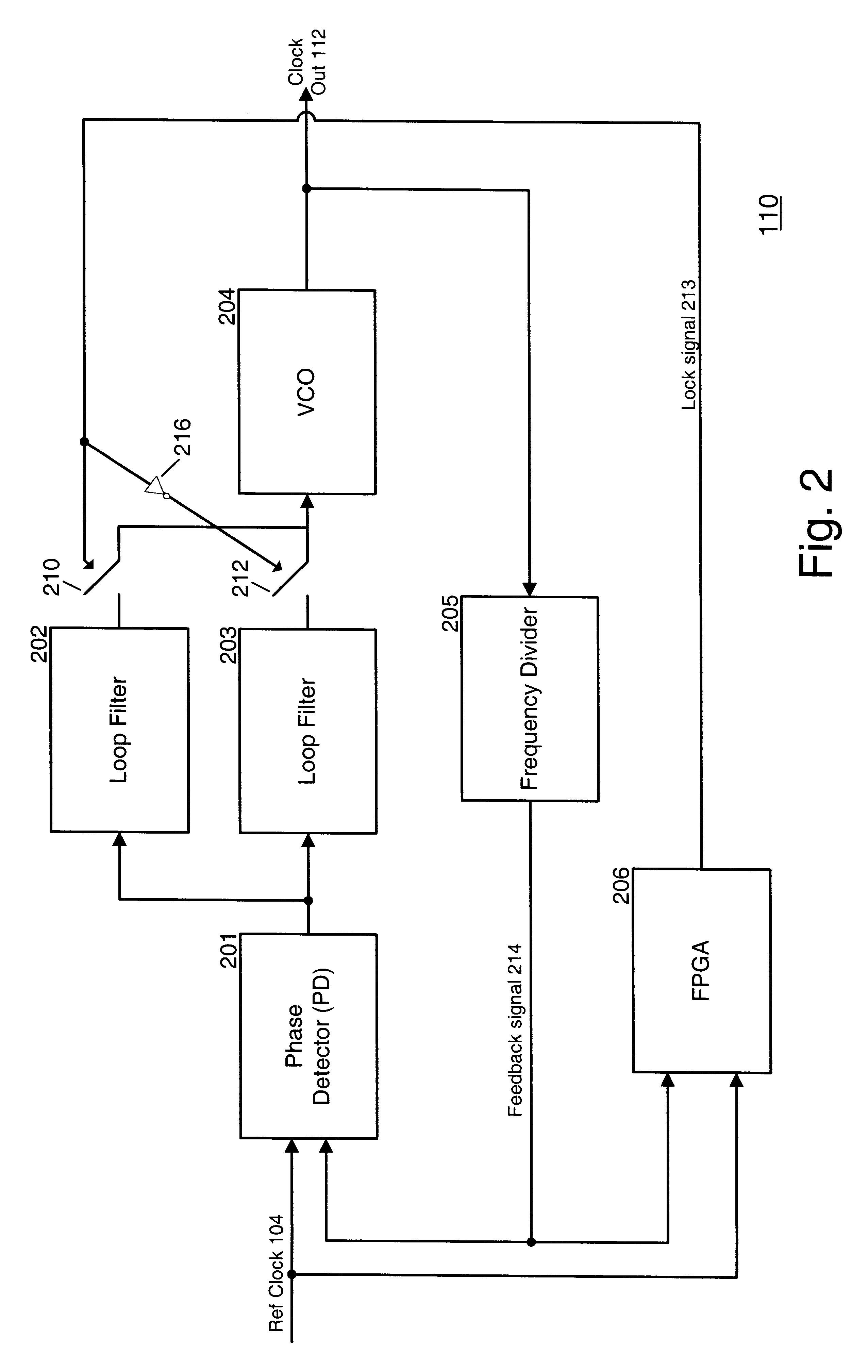Multi-loop phase lock loop for controlling jitter in a high frequency redundant system
a phase lock and redundant system technology, applied in the field of timing circuitry, can solve problems such as difficulty in the receiving system to obtain the acquisition ("lock") of the newly acquired clock signal, and the switching between high-frequency primary and redundant clock signals
- Summary
- Abstract
- Description
- Claims
- Application Information
AI Technical Summary
Problems solved by technology
Method used
Image
Examples
Embodiment Construction
refers to the accompanying drawings. The same reference numbers in different drawings identify the same or similar elements. Also, the following detailed description does not limit the invention. Instead, the scope of the invention is defined by the appended claims and equivalents.
As described herein, a multi-loop phase lock loop (PLL), containing multiple phase locked loop filters, each having different bandwidths, receives one of multiple high-frequency clock signals as an input. During clock start-up or upon a clock switch over sequence, the multi-loop PLL uses the wide bandwidth loop to quickly lock the input clock signal. Once the clock signal is locked, a narrower bandwidth loop filter in the PLL can then reduce jitter in the locked signal. Alternatively, during a clock switch over, if the new clock signal is enough in phase to the old clock signal, the multi-loop PLL may immediately use the narrow band PLL to reduce jitter.
FIG. 1 is a block diagram illustrating, at a high lev...
PUM
 Login to View More
Login to View More Abstract
Description
Claims
Application Information
 Login to View More
Login to View More - R&D
- Intellectual Property
- Life Sciences
- Materials
- Tech Scout
- Unparalleled Data Quality
- Higher Quality Content
- 60% Fewer Hallucinations
Browse by: Latest US Patents, China's latest patents, Technical Efficacy Thesaurus, Application Domain, Technology Topic, Popular Technical Reports.
© 2025 PatSnap. All rights reserved.Legal|Privacy policy|Modern Slavery Act Transparency Statement|Sitemap|About US| Contact US: help@patsnap.com



